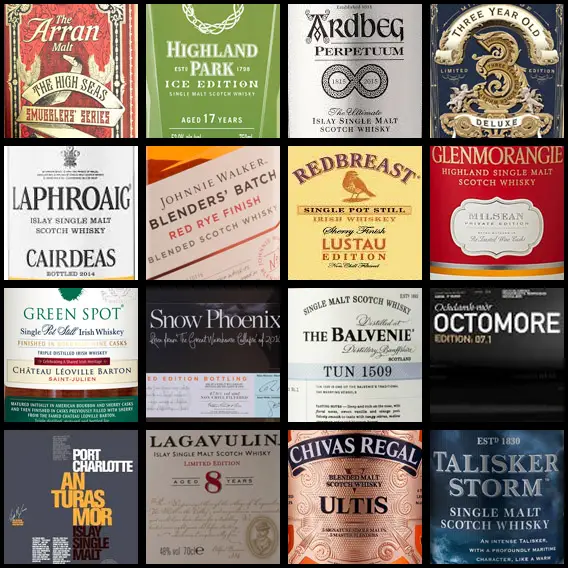
I’ve seen some backlash recently in social media and among bloggers to the proliferation of limited or special bottlings (usually NAS) that have entered the market recently. It seems that just about every distillery is frantically blending and selecting barrels for one-offs, while their interns are leafing through Gaelic almanacs in the local archive, looking for thus-far unused local landmark names.
The motivation for this is pretty clear: today’s whisky lover has grown bored with the standard official bottlings with age statements, and seems compelled to drink (or collect, or both) something new with every purchase. This is especially beneficial for whisky producers who are always looking for ways to charge more money for younger whisky, and the accompanying NAS trend synergizes perfectly with this new market paradigm. I put on my marketing exec hat for that sentence. How’d I do?
By choosing slightly different barrels, or barrels from maturation experiments with disparate levels of success, producers can bottle something just barely different enough from their main offerings to justify a “limited edition” name along with a “limited edition” price tag. The fact that a decade ago these barrels might have been sold off to independent bottlers at a hefty discount for fear of jeopardizing the cherished “consistency” of their flagship bottlings, seems to be lost on the modern consumer. This is probably because the barrier to tasting a wide array of whiskies is very high, so most consumers (even those who sample widely) aren’t intimately familiar with the quality (good and bad) of the independent market. It’s easier to trust that GlenMcKenna Fuadan Àite, with the shiny design-firm label and strong marketing campaign is worth your $70 than Bob & Joe’s GlenMcKenna 13 year-old 2003 – 2016. This, even though they both come from distillery leftovers and the NAS is actually an undisclosed vatting of 6 and 11 year-old whisky.
And how could you know? Unless you regularly throw the dice on Bob & Joe bottlings and have a lot of trust in their barrel selection (and deal-making) abilities, have access to the best-stocked whisky bar in the world, or have insider information about NAS components, you can’t.
Supposedly whisky reviewers such as my humble self can bridge that particular gap, but I can say from experience that even with a whisky budget from advertising revenue, one of the best-stocked whisky shops in the US nearby, and contacts at PR firms who send me samples, I can’t possibly taste a significant fraction of everything that’s available on the market. “Of course,” you might say, “That’s why there are hundreds of blogs out there – someone’s covered it!” This is true, although trying to reach a conclusion about the quality of a release (especially a middling one) by reading multiple online reviews is an exercise in futility. Palates vary widely, and the calibration of ratings scales (one man’s 80-point Laphroaig 10 is another man’s 92-point Laphraoig 10 is another woman’s 4.5-star Laphroaig 10) vary even wider. At that rate, you’d have no time for drinking after all that reading. Even if you find consistent reviews online, tasting is very subjective and everyone’s palates, preferences, prejudices, and pesos are extremely different (yes, I stretched to hit that alliteration). “Worth my money” is an impossible metric to crowdsource.
So to meander back to the point: Are there too many limited editions on the market? I say “no”. The current dizzying array of products is just as dizzying as it was when there were 50 distilleries on the shelf each with a 10, 12, 15, 18, and 21 year-old bottling. This selection is intimidating, but it’s also enticing. What do all of those bottles taste like? What’s different about them all? That drive to discover is what got most of us interested in whisky beyond Johnnie Red and Black in the first place, and I say that anything that keeps interest in whisky high is good for everyone. (We don’t want to see another rash of distillery closures like the 1980s).
I just wish we could do something about transparency of NAS contents, but that’s a topic for another day. Cheers!

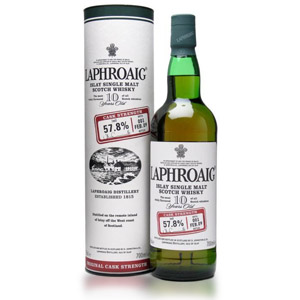
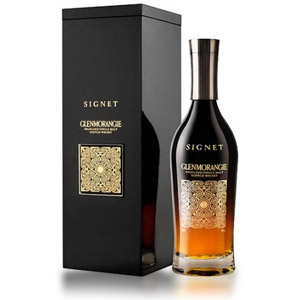
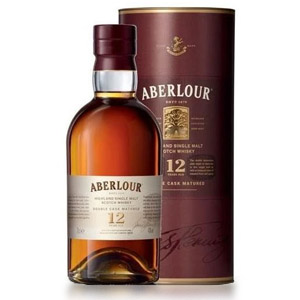

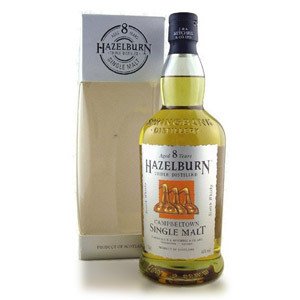
I really enjoyed this post. It’s got good flow, anecdotes, offers arguments on both sides, and it provides tangible support for the concluding recommendation. Well played, indeed. Like SN, I also agree that more offerings, relative to less, are always a very good thing for the discerning buyer. (Ever walk into a grocery store in a communist country? If not, I promise that you will reach the same conclusion when you are presented with only 1 choice of cereal, laundry detergent, and toilet paper.) Does the current Scotch whisky environment of mass choice lead to the un- or partially educated buyer getting occasionally royally ripped off by over-hyped and over-priced pap such as Talisker Skye, Oban Little Bay, or Ardbeg Dark Cove? Sure, but with just a bit of research on some of the informative sites mentioned on the right margin of this very page, an average consumer can learn enough to dodge major land mines. If history is any indicator (and it typically is) when the smoke finally clears on the over-heated and runaway Scotch whisky market that we now find ourselves in, the quality products and quality producers will continue to stand tall, and the pretenders will fall by the wayside. Alcohol consumers are a fickle bunch, with tastes that pivot rapidly. Whether its flavored vodka, craft beer, or boxed wine, the flavor-of-the-month will change quickly and unexpectedly. However, consistent quality always perseveres. I’m hopeful that Scotch whisky producers remind themselves of this concept every day.
Thanks for the comment, DJ! I agree that the current situation is somewhat untenable. My prediction is that consumers (including whisky aficionados) will become weary of the continued special releases and there will be an industry backlash, focusing consumer spending on “tried and true” flagship editions. With demand so high across the board, however, due to buy-in from new markets like India and China, it might be a long time before producers feel any real market pressure. We shall see.
In some ways I feel relieved there are so many special releases. I can’t possibly try all of them — or even the ones I’m kind of interested in. I’ve noticed that in the last six months or so I’ve gravitated back to old favorites. I’m not sure if this just the life-cycle of a budding aficionado, a function of there being too many choices (which aren’t always easy to figure out for me), a combination of the two, or something else entirely.
“Consistency.” Good point. I’m a die-hard Laphroaig fan and it pains me to admit it, but Ardbeg used to be the better whisky for the price. Pit a ~2008 Ardbeg versus a recent release. The difference is striking. Other factors are always possible–changes in yeast, shorter ferments, and other cost-saving quality reducers–but I can’t help wonder if diverting all of those fine barrels to cobble together Ardbeg Superunknown or Ardbeg [Gaelic word for peatbog whirlpool] didn’t take a toll on the standard product. I like special editions and enjoy the occasional variety. But if the core brand suffers and loses market share, the ultrapremium versions may not be enough to make up the lost revenue to the distillers. I’d be interested to see the accounting books.
At least there is always still Laphroaig 10!
Once the hammer price at whisky auctions started skyrocketing across the board we all wondered how and when the distilleries would reposition to take advantage of this bizarre new world of identity consumerism, and whisky investing.
For the most part I think the rising tide has benefited every level of consumer. To be sure, there have been numerous cash grabs via NAS, but we have also seen an influx of craft and large distillers alike willing to take the risk of diversifying or even offer their own single malt bottles when all they ever made was intended for some kind of blend.
Walking into a whisky shop these days is more akin to walking into a wine shop now with the regions, varieties, and vintages. Once you figure out your personal preferences I think there is more than enough opportunity to find out for yourself your go-to distilleries and start digging into their catalogs. Once that process starts its impossible to say that there are too many limited editions.
Great piece. Not sure we’ll see a “special edition” fatigue set in, so much as a backlash over NAS bottles proving to be inferior products. The special editions have forever been available at duty free, and you can’t overlook they’re often purchased as gifts or one-time buys of the uninitiated…”ooh, an unpronounceable Scottish word and a black label!” The diehards will still buy their old standbys, playing around now and then as we do.
Of all the limited editions, Binnys in the Chicago area has the Oban DE and Lagavulin DE for $69. These are extra matured for a year more than their standard bottling and they present fantastic value.
The scary things is that this “phenomenon” of limited edition is now creeping into American whiskey. Take, for example, the new FEW Flaming Lips Rye, which is the exact same spirit as FEW’s regular Rye, but is watered down to 40% ABV, includes a fancy label with the a Flaming Lips namedrop and sells for almost double the price of their standard rye. Shameless.
I think another thing to consider is that the scotch whisky industry as a whole is probably terrified of another whisky glut. Working with wood treatments as flavoring (quarter casks, octaves, wine treated wood, weird other types of barrels, etc) along with releasing the whisky as NAS allows the industry to answer the current ADHD demand for new shiny objects AND get rid of massive quantities of young stock that they might otherwise be forced to sell off to Indie Bottlers or Blenders at a vastly reduced profit later on.
The bottom line is that the only way to stop this behavior–if that is what we want–is by voting with our wallets.
I thought this group might be amused at the fact that the bath water known as Talisker Storm can now be easily found for $30 in Atlanta liquor stores, discounted from $85! Soon they’ll be using it to water flowers.
Well, it’s not *that* bad, but I was rather shocked when Storm came out as a “premium” NAS that cost far more than Talisher 10. OK, I guess I shouldn’t have been that shocked that Diageo pulled these kind of shenanigans.
Then Ardbeg pulled the same stunt with Perpetuum – and that one’s still sitting on the shelves of my local store two years later.
A key point to me about “Limited Editions” is that, like “Small Batch” and “Single Cask”, it’s a term that IMPLIES exclusivity but has no actual legal definition. What does “limited”, “small” and “single” actually MEAN in the above contexts? Absolutely nothing, but, again, they imply something “different” and “special” that goes undefined.
Also, a new name not only enhances potential “collectability”, but also resets the board in terms OF reviews – “but this is something different than that” – so, if it’s crap, a new name will allow the product to sell for some time before any negative word of mouth can accumulate against it.
And, of course, in the end, there’s supposedly nothing wrong with the proliferation of product names on the basis of empty adjectives rather than real product information – it’s all “in the spirit of exploration” and people’s “whisky voyages of discovery” and other such crap. Give us more nonsense, tell us less, and raise the price – and it’s nothing more than most passive consumers deserve anyway.
I just wish the LCBO (the only place to purchase whisky/whiskey in Ontario, Canada) would carry more whiskies with age statements. They seem to carry a ton of these “special editions” but trying to find something as straightforward as a Laphroaig 10 can be next to impossible.